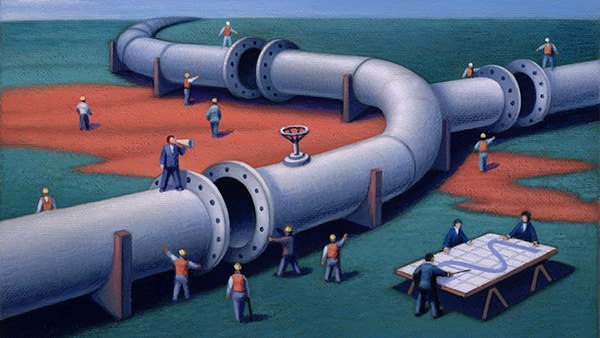Can one person do mid-level and major gifts? The short and simple answer is “yes.” Yes, they can. And it might be your solution as an entry point to staffing up or because your organization is small.
But for the long term, having one person do both functions is not as effective or efficient as having a person for each of them. Here’s why:
Mid-level and major gifts are two different strategies with two different approaches.
Major gifts is about developing one-to-one relationships with each qualified donor on your caseload. Close. Intimate. Very personal. Mid-level is about one-to-some relationships. One person, the MLO, working with a group of donors. Not as close. Not as personal. More towards mass marketing, but starting to give the donor an idea of what a deeper relationship with the organization looks like.
It’s not that one person can’t do a scaled down version of each. It’s that you will not get the same result for the resources (money and labor) expended. It might be better to invest in a full-time major gift person who, once successful, will cast off enough net revenue for you to hire a full-time mid-level person. Or you could hire a full-time major gift person and work with a competent volunteer to perform the mid-level functions.
The point is that having a fully dedicated person in each role will deliver the best results.
Having said all of that, you still could do both with one person if you have to. You may not have a donor pool size that can support both an MGO and an MLO. Or you may just have one fundraiser (i.e. the Executive Director) who is working with top donors, and there’s another group that still need to be managed, but not at that level. Ultimately, no matter how you structure this, your philosophy on donors should not change. Your focus should still be on learning the donor’s passions and communication preferences, you should be reporting back on impact, and you should be creating a healthy cycle of stewardship and cultivation.
Now, Jeff and I recommend that if you must start with a hybrid position, then have an objective to move to a full-time major gift person as soon as you can. That will yield more net revenue more quickly. And then you can build the mid-level solution from that strength.
Here’s how you can do this (temporarily) in a way that is sustainable for the interim period:
- Start by being clear about how much time you can dedicate to your caseload donors. A full-time MGO would have 150 qualified donors, and a full-time MLO would have no more than 600. If you are splitting the role, you’ll need to account for that in your caseload size. So, if you can only devote 50% of time to each, you’ll be looking at caseloads of about 75 major donors and 200-300 mid-levels. But the priority should be on filling the caseload with major donors, and then you can create a mid-level caseload with the appropriate percentage of time remaining. Begin with the ideal, then start pulling back to the right, reasonable number based on bandwidth.
- Use the Donor Engagement Plan, our recommended planning tool which you can download here, to list all your donors, and tier the mid-level donors as a separate tier to distinguish them from others. In mid-level, we don’t set goals and your touch points are not personalized, so you’ll account for that in your plan. It’s critical that you dedicate the most time on your top tiers, which is where the greatest opportunity for ROI will come from.
Also, remember this. As you start to manage donors, you will reduce value attrition, which will start to pay for the cost of the additional labor you are or will soon be hiring. This point is often forgotten. Instead, managers and leaders fret and worry about the cost of the labor not realizing that in most cases, a majority of that cost is covered through the retention of donor giving.
Think about it this way. If your value attrition with the group of donors who will be managed is 50% and you’re able to reduce that to 10%, then the extra 40% of “found money” will generously offset the cost of the labor. Please factor that into your thinking.
Lastly, split functions in a job occupied by one person always result in the person loving and serving one of the functions more than the other. It never works out to the idealistic concept you have written down on a piece of paper. Which is why a job with a single focus is more effective and efficient. Start with the split function if you must. But move as quick as you can to service mid-level and major gifts with fully dedicated people to each, even if one or both of the positions are less than full time.
Richard

![Colleagues gather around a mid-level officer and applaud her for job well done. [What Makes an Extraordinary Mid-Level Officer?]](https://veritusgroup.com/wp-content/uploads/2021/04/AdobeStock_574161061-scaled.jpeg)
![Fundraisers discuss a mid-level caseload [Do You Qualify Mid-Level Donors?]](https://veritusgroup.com/wp-content/uploads/2021/05/AdobeStock_336027920-2-scaled.jpeg)




“…a full-time MGO would have no more than 600.” I think this is referencing a FT MLO?
Yes, you are correct! Thank you for pointing that out.